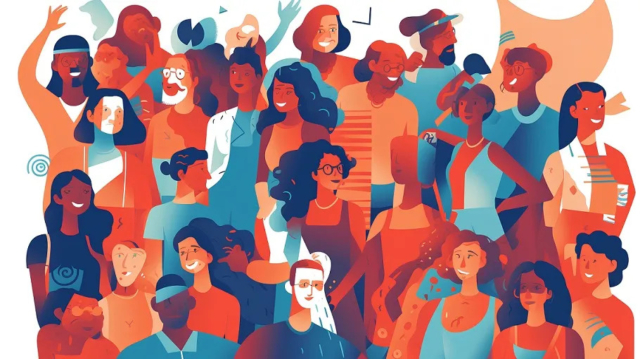How AI Transforms Workplace Culture While Driving Business Sustainability

Jul 27, 2025
Last updated on Jul 28, 2025
AI sustainability is no longer just the right thing to do—it's a business must-have for long-term growth. Companies that build sustainability into their strategies are finding new ways to innovate and lead their markets. The shift is already happening: a recent study found that 44% of organizations (and 37% of VPs/Directors) are currently using AI for sustainability, with about one-third planning future adoption. This trend continues even when facing political pushback, proving the strong business case for sustainable AI use.

Key takeaways
- AI sustainability initiatives give you clear business results through better resource use, equipment monitoring, and task automation while building safer, more inclusive workplaces
- The technology creates “double savings” by cutting both costs and carbon footprints, with 37% of business leaders already using AI for sustainability
- Success requires strong leadership focused on workforce change, ethical rules, and managing AI’s own environmental impact
- The real advantage isn’t just what AI does, but how it empowers your people and transforms your culture for long-term success
This mix of AI for sustainable development offers a powerful double benefit, cutting both operating costs and carbon footprints to achieve “double savings.” For CEOs, the real value of AI sustainability lies in its power to change not just processes, but your entire workplace culture. By using AI, you can build a stronger, more efficient, and more responsible organization from the ground up.
Automate tasks to reallocate human talent
Research from 41 leading American companies shows that operational sustainability is the main area where AI technologies are actively used. AI automates routine and repetitive work, from customer service systems to advanced robots on factory floors. This automation goes far beyond just replacing tasks—it completely changes how your workforce operates.
This frees up your employees to focus on more complex, creative, and strategic work, creating a more dynamic and engaged workforce. Manufacturing companies using AI for business growth report not only big cost cuts but also higher job satisfaction as employees move to more meaningful roles that need human judgment and creativity. The technology lets your organization move human resources to higher-value activities while machines handle repetitive tasks with better precision and consistency.
Optimize resource and supply chain management
AI’s impact on resource efficiency shows clear business value across multiple areas. AI systems analyze huge amounts of operational data in real time to optimize raw material use and cut waste. Companies in manufacturing and production using these systems report major improvements in resource efficiency, with some achieving up to 30% cuts in material waste through precise optimization.
In supply chains, AI-driven predictive analytics help forecast demand more accurately, which cuts excess inventory—critical for industries with goods that spoil quickly. Retail and e-commerce companies using AI for demand forecasting have changed how AI can help sustainability by understanding consumer needs, enabling targeted inventory management that cuts both financial and environmental costs.
Key supply chain benefits include:
- Optimized delivery routes that reduce transportation emissions
- Combined shipments that improve warehouse efficiency
- Better resource allocation that creates compound effects for both operational efficiency and environmental sustainability

Enable proactive risk management with predictive maintenance
Predictive maintenance represents one of AI’s most powerful applications for business continuity and cost management. AI-powered systems monitor equipment condition and predict failures before they happen, letting you schedule maintenance only when needed. This shift from reactive to proactive maintenance completely changes operational risk.
This proactive approach prevents costly downtime, extends the life of critical machinery, and improves overall reliability. Companies using AI-driven predictive maintenance report major cuts in unplanned downtime and maintenance costs. The technology analyzes equipment performance data, identifies patterns showing potential failures, and provides actionable insights that enable optimal maintenance scheduling. This capability is especially valuable in manufacturing and utilities, where equipment failure can result in substantial financial losses and environmental impacts.
Enhance workplace safety and employee well-being
AI’s contribution to workplace safety goes beyond traditional safety measures to create complete protective environments. In high-risk environments like manufacturing, AI-powered monitoring systems can detect potential hazards in real time, preventing accidents and ensuring employee safety. These systems continuously analyze workplace conditions, identifying dangerous situations before they become incidents.
By giving dangerous or physically demanding tasks to automated systems, you directly cut the risk of injury to human workers. The research shows that companies using AI-powered safety systems report major cuts in workplace accidents and related costs. Robots and automated systems now handle hazardous operations, letting human workers oversee these processes from safe distances using advanced control systems.
AI tools can also help monitor signs of employee well-being, such as stress or burnout, letting management make informed, data-driven decisions to improve the work environment. AI in employee experience platforms analyze behavior patterns and engagement levels to identify signs of stress, enabling timely interventions that support employee mental health and productivity.
Promote fairness, diversity, and inclusion
The role of ai in sustainable development extends to addressing workplace challenges through social sustainability. Use AI-driven HR tools to analyze recruitment data, helping to identify and reduce the unconscious bias that can occur in hiring and promotion practices. These systems examine patterns in hiring decisions, highlighting potential biases and providing recommendations for more fair practices.
Companies using AI-powered recruitment tools report improvements in workforce diversity and more consistent hiring standards. The technology analyzes job applications objectively, focusing on qualifications and skills while reducing human biases that can influence decision-making. This creates more inclusive hiring processes that benefit both organizational performance and social responsibility.
Ensure fair labor standards by using AI diversity and inclusion strategies to monitor work hours and analyze compensation data, promoting pay equity across the organization. AI systems can identify compensation gaps and provide insights for addressing inequities, supporting both legal compliance and employee satisfaction.

As you integrate these technologies, it is critical to lead with foresight. Be prepared to manage the workforce transition through retraining and skill development. The research shows that successful AI implementation requires proactive change management strategies that address potential job displacement concerns while maximizing the benefits of human-AI collaboration.
Establish strong ethical frameworks to govern data privacy and algorithmic transparency. Organizations must develop clear policies for AI decision-making, ensuring systems operate fairly and transparently. Ethics of AI in business considerations are crucial for maintaining stakeholder trust. Finally, be mindful of AI’s own environmental footprint, as the computing power required consumes significant energy. Companies are increasingly evaluating AI implementations through the lens of net environmental impact, ensuring sustainability gains outweigh energy consumption costs.
The future of sustainability in business depends on how leaders integrate AI to improve workplace culture by enhancing safety, promoting fairness, and investing in employee growth. Integrating AI delivers clear operational returns by optimizing resources, automating tasks, and enabling proactive risk management. However, effective leadership is crucial for navigating the real challenges of workforce transition, ethical governance, and AI’s own environmental impact.
Organizations looking to maximize their AI sustainability initiatives should consider partnering with HR consulting services that specialize in digital transformation and change management. The true competitive advantage of AI is not just in what it does, but in how it empowers your people to build a safer, fairer, and more resilient organization for the long term.
Join pioneering business and HR leaders at The Makeover 2025: SAILING AHEAD to discover how to unlock “HumAIn” potential for mastering workforce dynamics and building sustainable growth strategies.
At this event, you’ll:
- Learn cutting-edge HR management strategies for the AI era
- Network with expert practitioners who’ve successfully balanced technological innovation with sustainable business practices

Solve your HR problems!
6th Floor, Star Building, 33 Mac Dinh Chi, Saigon Ward, Ho Chi Minh city, Vietnam




